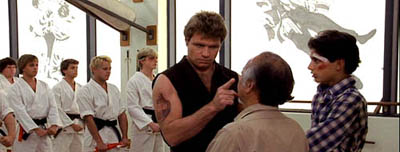
Disclaimer: CONSULT WITH A MEDICAL PROFESSIONAL BEFORE ATTEMPTING NEW EXERCISES OR TECHNIQUE VARIATIONS
Recently, I've had a number of questions posed to me online about lower back rounding and lower back strain when squatting. Here are my thoughts on lower back pain as it concerns squatters. Please feel free to comment.
*The lower back is rounding at the bottom of the squat because of inflexibility, previous injuries, and/or poor technique
Work on your hamstring and hip flexibility. Practice holding proper posture at the bottom of the squat movement. If you cannot full squat without rounding the back, DON'T SQUAT TO ROCK BOTTOM - only squat as deep as you can while still maintaining proper back positioning. Do not lose tension at the bottom of the hole - tension is uncomfortable, but it is your friend. Make sure to keep your chest out, head back, and core tight throughout the movement.
Understand that there may or may not be a quick fix to your particular situation - if flexibility is lacking, it will require more than a week or two of stretching and practice and it may, in fact, take many months, even years to develop a "mature" and deep squat and improve posterior pelvic tilt. Be patient.
*Performing a good morning out of the bottom of the hole because the core is weak, the hips and hamstrings are tight or weak or inactive, and/or focus on keeping the chest out throughout the movement is lacking
*You are doing a high-bar squat and sitting too far back when squatting
This is probably one of the most common errors I see among trainers and trainees alike. Because of the bar's greater distance from the body's center of gravity, it is essential to maintain a relatively upright upper body when squatting with a high-bar position. You will not dramatically drive the hips backwards as you would with a low-bar position AND it will be difficult to keep your shins perpendicular to the floor. Remember that outwardly rotating the hips is a key to engaging them and will also help you maintain proper posture and shins relatively perpendicular to the floor.
Are my hamstrings and hips inflexible?
Are my shoulders and/or upper body inflexible?
Does my lower back round at the bottom of the squat?
Do I do a good morning out of the bottom of the squat?
Are my abs weak?
Do I hunch over when squatting?
Do I relax at the bottom of my squat at all?
Do I have a high-bar position and "sit back" when squatting?
If you answer "yes" to any of the questions above, you will have a good notion as to what may be causing your back pain when squatting - get busy improving them. The next installment will focus on rehabilitation and recovery methods that I have found to be helpful.

















